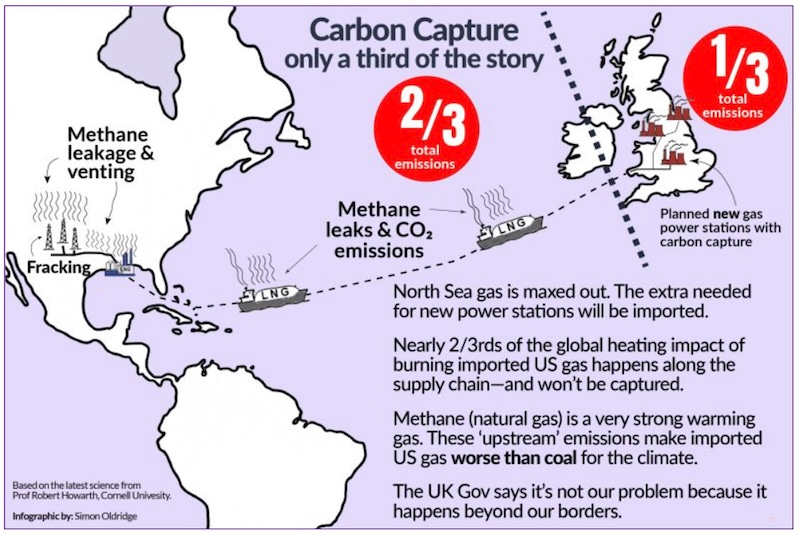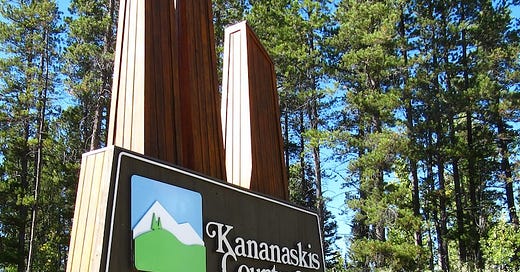G7 Summit Positions Carney to Lead on the Wrong Crisis
Canada is stepping into a leadership role at the G7 summit in Kananaskis June 15-17. But don't expect leadership on climate change. At least, not yet.
With the G7 leaders’ summit kicking off in Kananaskis, Alberta today, Prime Minister Mark Carney is shouldering sky-high expectations that the meeting will deliver results on one of the most dire crises facing Canada and the world.
But not necessarily on the one that has brought devastating wildfires to Alberta and surrounding provinces, prompting speculation that 225 active blazes, 120 out of control, could force climate change onto participants’ radar if not into their lungs.
Carney’s priorities as this year’s G7 President are no surprise to anyone who followed his messaging during the federal election campaign earlier in the spring, or the direction he has set for his new government. The agenda is mono-focused on the rogue regime in the United States, the multiple, deep perils it has introduced for international peace, security, and trade, and the existential threats in Donald Trump’s economic warfare and his continuing preoccupation with Canada as a future 51st state.
(Our friend Peter McKillop at Climate & Capital Media is out this morning with an excellent, openly AI-generated send-up in which a parade of luminaries, from Franklin D. and Eleanor Roosevelt and Gloria Steinem to Trump advisor Stephen Miller and his “comrade” Joseph Stalin, comment on the danger we face from “boys with their toys”.)
The three “core missions” Carney sets out for the G7—protecting our communities in the world, building energy security, and securing the “partnerships of the future”—can all be read as a direct response to the roiling, daily monstrosity playing out south of the border.
Recent, customary G7 priorities like nature protection, affordability, and gender, empty and performative as they’ve been in recent years, receive no mention at all.
Climate change is only at the edge of the picture, in a reference to “improving joint responses to wildfires”. According to news analysis in the last week, that’s partly because Trump’s wanton malevolence and destruction need the G7’s full attention, partly because anything more explicit about climate change in the summit communiqué would raise hackles with his negotiating team and get the red ink flying.
Those risks, in turn, points to the two overarching summit objectives that pundits have been talking about:
• Averting the kind of explosive snit from Trump that blew up the 2018 gathering in Charlevoix, Quebec, the last time Canada hosted the G7 leaders;
• Solidifying the wider international coalition of “like-minded nations” that Carney has been promising to assemble and lead, including and reaching beyond the usual G7 roster.
Time for Canada to ‘Show Some Backbone’
But centring those big-picture imperatives comes at a high cost.
On the home front, Carney’s moves to defend the country threaten to shred the very national fabric and cohesion he has set out to protect—from a “race to the bottom” in national health standards that could reopen the door to asbestos exposure, to provisions in Bill C-5 that gut environmental assessment and nature protection while sidelining Indigenous and other community voices.
At the international level, it’s no surprise that “climate change is off the table in formal outcome documents,” write Alexandra Scott, senior climate diplomacy expert with Italy’s ECCO climate think tank, and Luca Bergamaschi, the organization’s co-founding executive director. “Many G7 members have pushed to keep climate change a topic at the leaders’ table, but no space for agreement has been found with an ideologically opposed U.S.”
But there’s still space for Carney’s G7 summit to choose between a bad outcome and a far worse one. Scott and Bergamaschi write:
More damaging… would be the political backing of new gas infrastructure, and in particular new liquefied natural gas (LNG) capacity. As pointed out by the IEA [last] week, we are at the cusp of “the largest capacity wave in any comparable period in the history of LNG markets.” This would have profound impact on global gas markets at a time when major gas consumers, namely Europe and China, show trends of much lower demand than expected, as both blocs electrify their economy and increase efficiency. Gas has become a very risky investment, and it is Mark Carney, as chief financial expert among G7 leaders, who should know it best.
Against the strong likelihood that Trump and his tantrums will become the public face of this summit, the two analysts still see space for more constructive conversation behind closed doors. “Until last year, the G7 have already made many commitments on climate action and supporting developing countries to adapt and cut emissions,” they write.
Those pledges have continuing, tangible support from some of the non-G7 leaders that Carney has invited to Kananaskis, including Australia’s Anthony Albanese, South Korea’s Lee Jae-myung, and Brazil’s Luiz Inácio Lula da Silva. (Although Lula and Albanese have recently been making some decidedly carbon-intensive decisions.)
Which means there’s still political space for some useful outcomes from this year’s G7 festivities, as long as Carney and his team bring some “backbone” to this year’s productivity, Scott and Bergamaschi say. That would mean:
• Planning for the domestic transformations that turn economies into “electro-states”;
• Redirecting G7 fossil fuel subsidies that stood at $282 billion as recently as 2023;
• Rebooting the “solid bilateral agreements” on which international cooperation depends.
“There is much re-inventing to do,” they conclude. However, “from international climate governance to reforms of the international financial system, the overwhelming majority of countries have a core security and economic interest in advancing [the response to] climate change, which is still the largest and most complex threat to peaceful co-existence in this century.”
Seize the Moment When It Comes
No one should hold their breath for that re-inventing to begin in Kananaskis this weekend. The question is how soon this moment will pass—how much more time we’ll squander in our response to a climate crisis—and how ready G7 and other governments will be to push ahead once Trump is no longer dragging them backward.
Some part of the shift away from a preoccupation with Trump may already be emerging in Canada, with at least one veteran commentator pointing out that the issues that determine an election result can evaporate in the six months following the result. Carney pulled off an epic political upset in the April 28 vote because enough voters were looking for the leader who could protect the country in a moment of geopolitical crisis. But between May 2 and May 30, according to the Angus Reid polling organization [pdf], the proportion of voters identifying Trump and U.S. relations as their most important national issue fell from 25.2 to 15.8%, while jobs, the economy, health care, housing, and inflation (though not climate or the environment) began to regain ground.
The ECCO analysts’ point about the looming glut in LNG demand shows how quickly and powerfully the scene could shift for the energy and geopolitical issues on the G7 agenda. Their argument is about economics and technology, not retail public opinion, but the parallel is in how quickly the truths we think we can count on can suddenly become a whole lot less certain.
Today, it’s still popular wisdom (even though there’s too much spin and little or no real wisdom behind it) to assume that fossil fuels will rise into the future. But the International Energy Agency has been telling a different story about oil, gas, and coal demand for four years, global clean energy investment is now outrunning fossil fuels by a healthy and widening margin, and over the last week I’ve begun picking up some informed rumbling that a breakaway moment in Canadian energy transition investment may be just around the corner.
Moreover, there are signs that that “popular wisdom” is really just the ideology we absorb in petrostates like Canada and the U.S.
“I don’t think Canadians realize that the conversation about the future of fossil fuels, particularly the future demand for oil and gas, is completely different within Canada and outside Canada,” University of British Columbia climate science Simon Donner, who co-chairs the federal Net Zero Advisory Body, told The Energy Mix last week. Investors and public figures elsewhere “already are making decisions based on the projections for a long-term decline in demand for oil, and in some cases for gas. A lot of this comes from the International Energy Agency, that to be clear has a long history of over-predicting fossil fuel demand.”
It’s too bad that Canada’s long-standing metaphor about “skating to where the puck is going” has fallen out of favour, after the one-time superstar for whom it was coined betrayed the country in an #ElbowsUp moment.
But Carney—who’s widely reputed to enjoy this kind of hockey talk—can still seize on this year’s summit sessions to set the stage for what’s next, for putting the climate transformations we need at the centre of the G7 agenda once Trump and his band of thieves are no longer blocking the way. Especially while the new, more reliable trading partners the PM is working to cultivate are all in the same room.
He won’t be able to say it out loud or shoehorn it into this week’s official communiqué. There’s no guarantee he’ll pivot when the opportunity presents itself. So the immediate challenge for Canadians is still to hold federal and provincial governments accountable for the massive changes in environmental, social, and health regulation they’re so intent on fast-tracking, all in the name of strengthening the economy against the Trump threat.
But this moment will pass, and that sets the expectation for governments and all the rest of us to proceed on two tracks: responding to Trump as we must without destroying the values (and, not to overstate the point, Values) we’re trying to protect, while preparing to get back to the real stuff that matters when Trump’s illusion of strength has finally been shattered. It may happen sooner than we think. And when, not if, it does, the climate emergency and the energy transition will leave us no time to waste.
Mitchell Beer traces his background in renewable energy and energy efficiency back to 1977, in climate change to 1997. Now he and the rest of the Energy Mix team scan 1,200 news headlines a week to pull together The Energy Mix, The Energy Mix Weekender, and our weekly feature digests, Cities & Communities and Heat & Power.
Graphic of the Week

‘Clean Energy CEO’ Becomes Canada’s Top Bureaucrat as Carney Names Sabia Privy Council Clerk
Major Cereal Crops Fall Behind Because of Climate Change, Study Shows
Hoping for ‘Decarbonized’ Oil Defies High School Chemistry, Climate Advisor Tells Carney
The Smoke From Canada’s Wildfires May Be Even More Toxic Than Usual
Ottawa Battery Project Down But Not Out After Failed Committee Vote
‘Another Year, Another Record’: CO2 Peaks Above 430 ppm
Opinion: ‘Don’t Look, Just Leap’, Carney and Ford Agree
‘National Interest’ Projects Bill Ignites Wave of Indigenous, Environmental Opposition
Diversified trade and strong pollution laws work together (The Hill Times)
Clean Energy Rollbacks Will Cost U.S. Economy $1.1T by 2035 (Inside Climate News)
A good day to be a fossil fuel (Politico)
Alberta's power grid 'cannot possibly connect' all proposed data centres, system operator says (Canadian Broadcasting Corporation)
Most new-build homes in UK must be fitted with solar panels (British Broadcasting Corporation)
BYD launches cut-price EVs in Europe amid global price war (Semafor)
Tesla registrations down 90% in Quebec in 1st quarter of 2025 (Canadian Broadcasting Corporation)
Transit Bounces Back in Europe and Asia, Lags in Americas (Bloomberg)
U.S. Homeowners Battle Insurers Over $2.9T Climate Risk (Bloomberg)
German Greens call for expropriation of Russian oil giant Rosneft (Der Spiegel)
Military has understood strategic advantages of low-carbon technology – security researcher (Clean Energy Wire)






